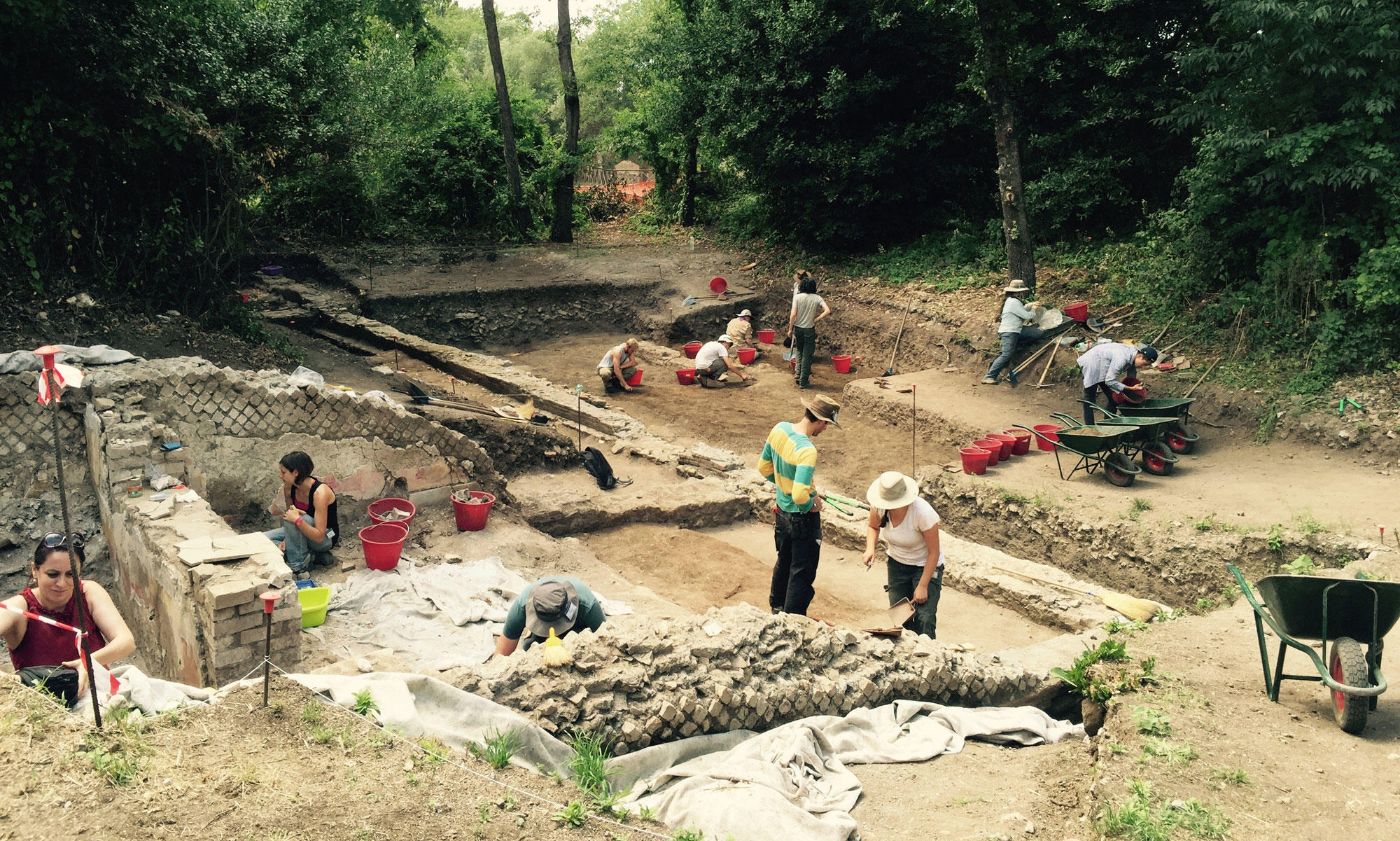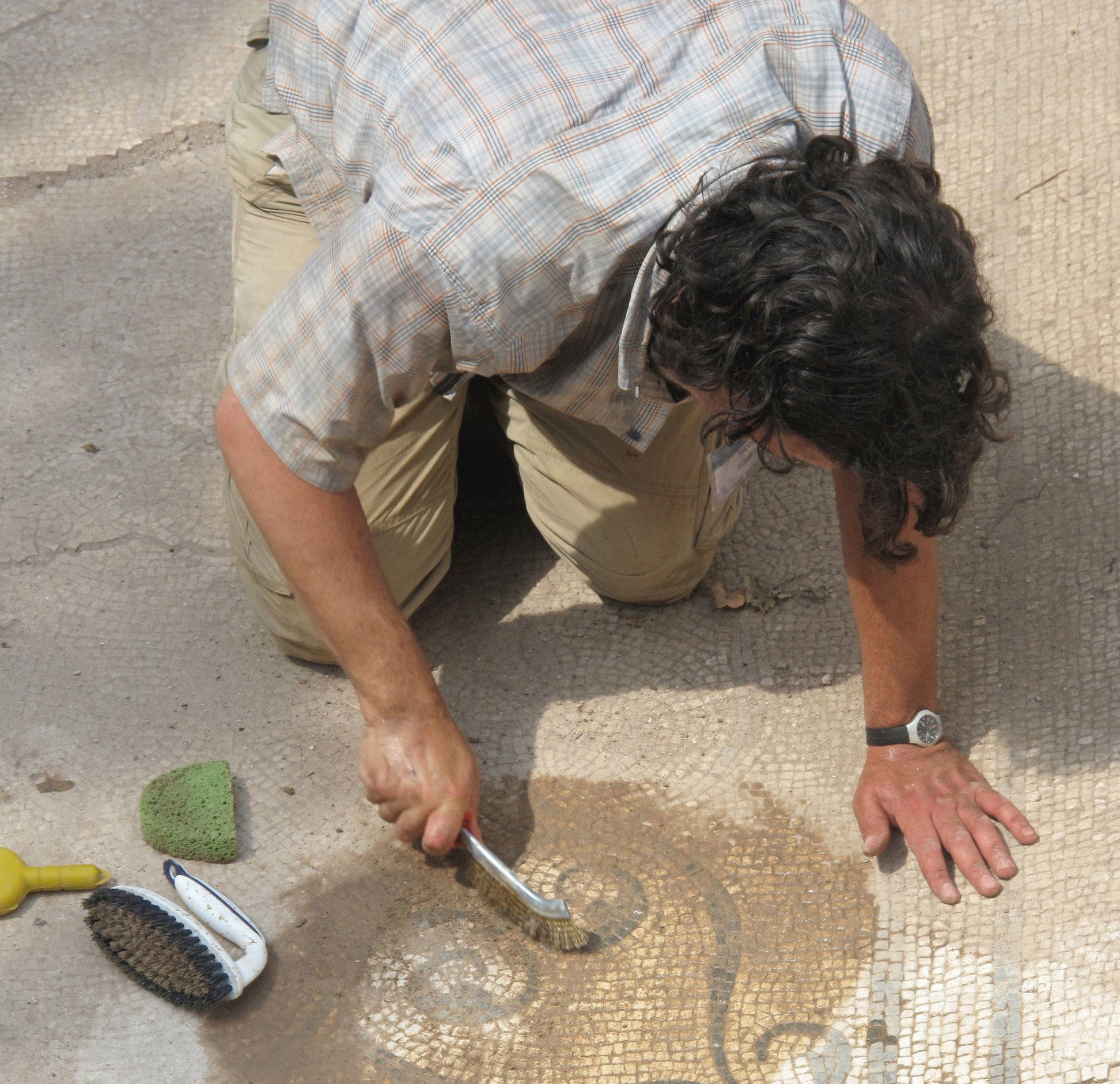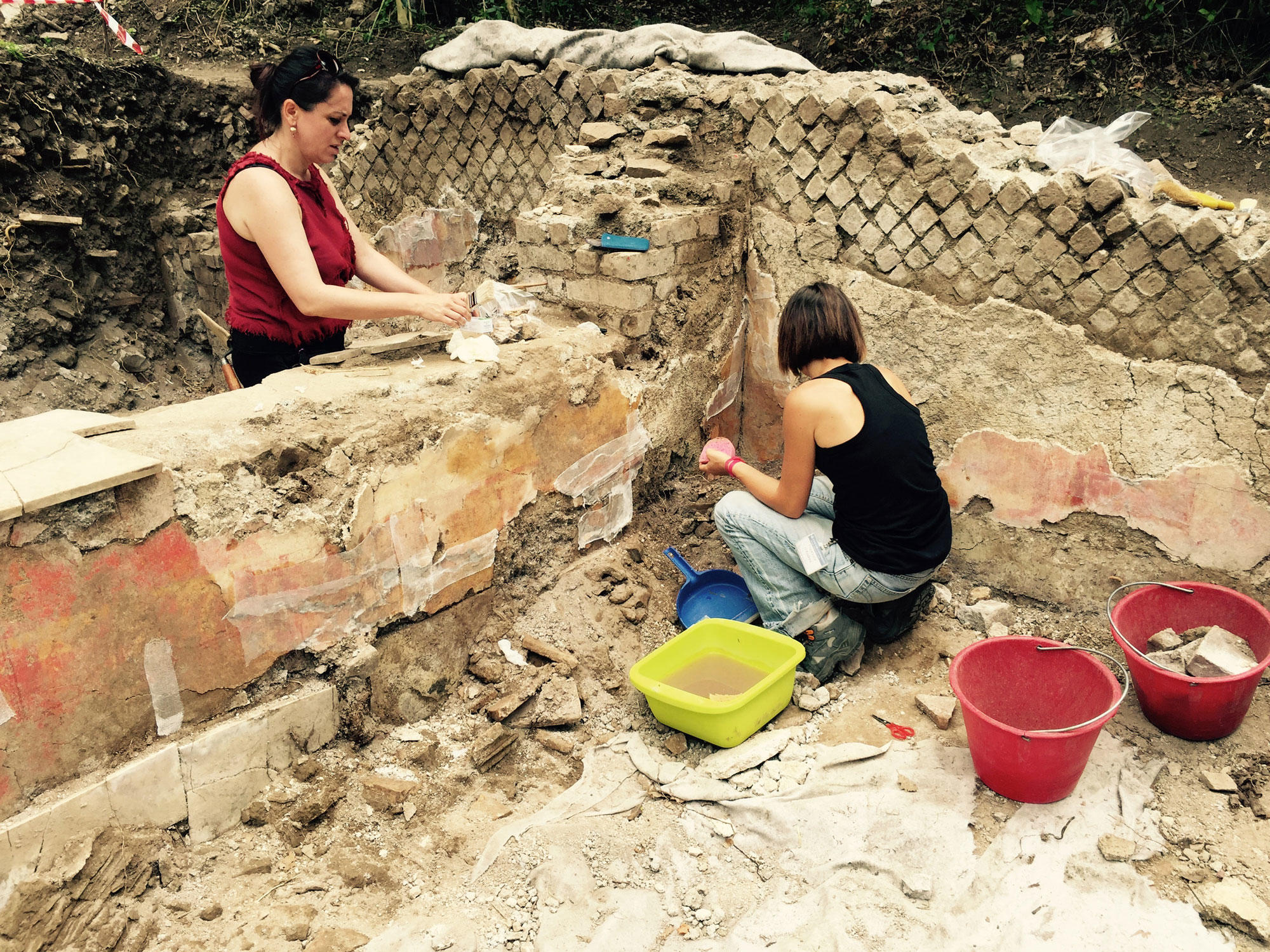Hadrian’s Villa, an enormous countryside compound built for the second-century Roman emperor in what is today Tivoli, Italy, has long been admired for its architectural and artistic significance. Since its ruins were discovered in the fifteenth century, scholars have marveled at the site’s unique blend of classical Greek and Roman design elements and written extensively about its lavish buildings, baths, pools, and fountains.
But although academics have devoted considerable attention to the site’s aesthetics, little is known about the lives of the estimated two or three hundred administrators, craftspeople, and servants who labored on the estate. That is why Columbia faculty members and students in the Advanced Program of Ancient History and Art are leading a major excavation of the site aimed at learning more about the villa’s workers, not its wonders.
Over the last two years, Francesco de Angelis, an associate professor of art history and archaeology, and Marco Maiuro, an assistant professor of ancient history, have been collaborating with local scholars to identify previously unexplored areas of the three-hundred-acre compound. The Columbia team has already made several significant discoveries. For instance, near the center of the complex, on a small plot of land surrounded by the standing remains of the emperor’s own living quarters, they unearthed the foundation, floors, and partially destroyed walls of what appears to be the home of a high-ranking administrator — possibly a manager of the estate.
“It’s not as lavishly decorated as the emperor’s quarters, but it’s not a lowly servant’s quarters, either,” says de Angelis. “There are some gorgeous marble mosaics on the floors, which our team is now preserving. And we’ve found bits of a brilliantly colored fresco, which fell down off the ceiling and scattered on the floor. This tells us that the person who lived here was pretty important.”
Using ground-penetrating radar equipment, the excavation team has also spotted the buried foundations of what appear to be several other living quarters on the same plot. Dozens of Columbia undergraduate and graduate students will begin unearthing these structures over the next year or so. As they dig, they will be looking for clues about whether the people who inhabited the buildings were freemen or slaves, whether they raised families, whether they had time for leisure activity, and how they worshiped.
One of the most important questions the researchers hope to answer is how life at the villa changed after Hadrian’s death in 138 CE. While Hadrian is known to have visited the estate regularly, and even to have lived there for periods of two or three years at a time, the extent to which his successors, including Antoninus Pius, Marcus Aurelius, and Lucius Verus, made use of the compound is unclear. Scholars have previously speculated that the villa fell into disuse during the decline of the Roman empire in the fourth century, but no solid evidence has ever been found to indicate that was the case. The Columbia researchers are using their detective skills to determine exactly when the villa was abandoned, why, and whether abruptly or in stages.
“We’re looking for signs that would indicate, for instance, that the villa was adapted for more practical purposes after the emperors stopped coming here,” says de Angelis.
It will take the researchers years to piece together any clues they find. But the quest itself is exciting, they say, because the questions they are asking are new.
“Until now, scholars have always come here to study the art and architecture of Hadrian’s Villa, since those aspects of the complex are truly exceptional,” says de Angelis. “But this has led them to ignore the fact that this was a thriving miniature city that was abandoned at some point for reasons no one has ever explained.”





